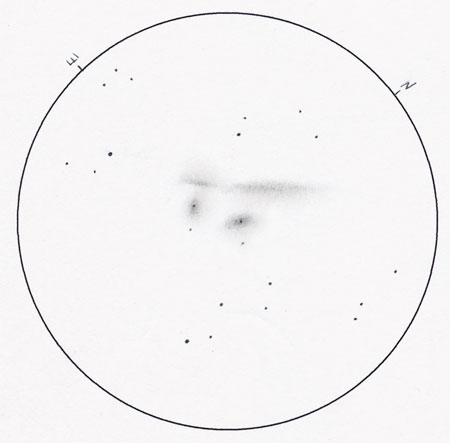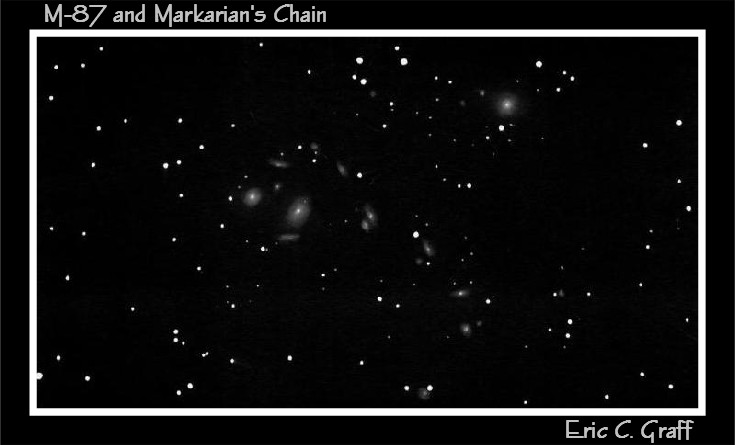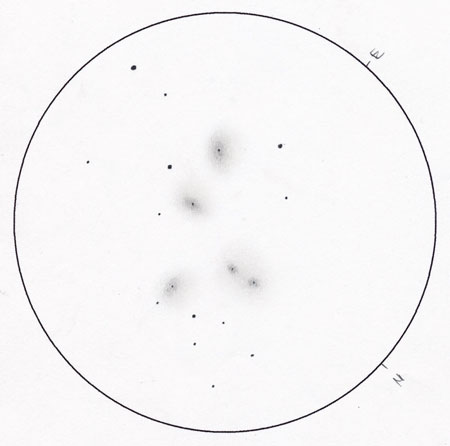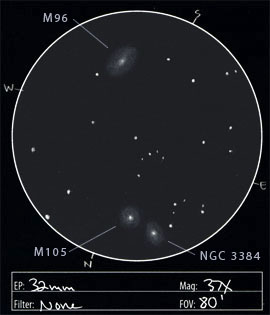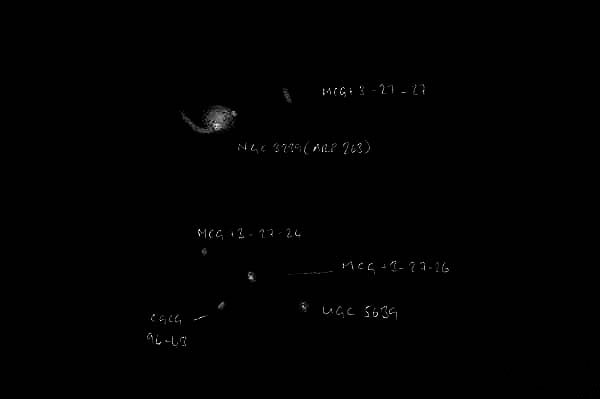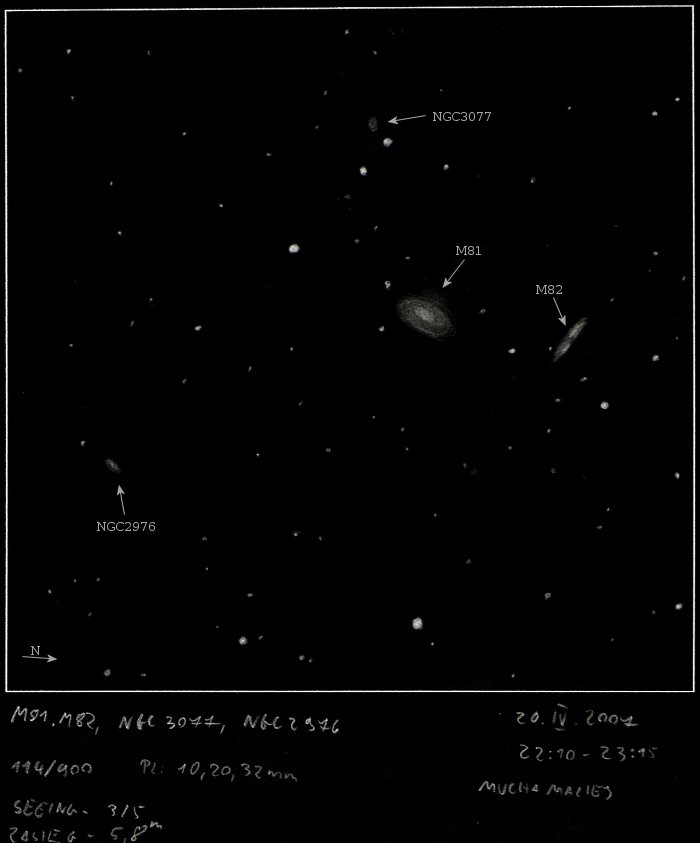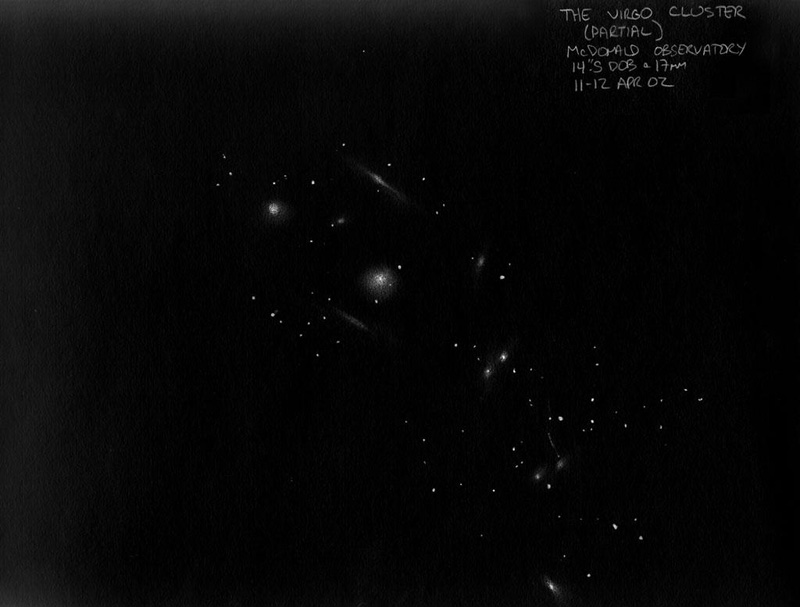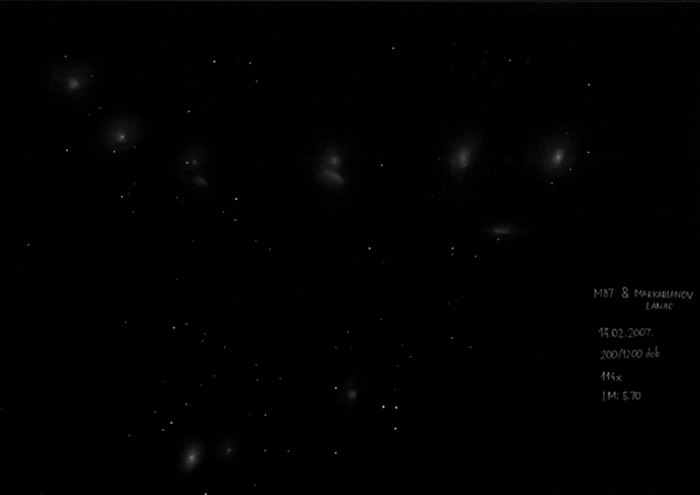Hickson 61
Sketch and Commentary by Bill Ferris
Move mouse over sketch to see labels.
Hickson 61: Galaxy Cluster (Coma Berenices)
RA: 12h 12.3m / DEC: +29º 10′.8
Instrument: 18-inch Obsession
This quartet can be found in northwestern Coma Berenices. 4.3 magnitude Gamma (15) Comae Berenices shines as a naked eye landmark about 3 degrees to the east. My sketch presents a 199X view in the 18-inch Obsession. The brightest of the four galaxies is NGC 4169, also known as Hickson 61A. This 12.2 magnitude S0-type galaxy covers a 2′ by 1′ area and is aligned northwest to southeast. It is westernmost of the four, becomes gradually brighter towards the middle and displays a stellar core. The slender galaxy 2′ to the northeast is Hickson 61B. Hickson 61B is a 13.6 (B) magnitude spiral seen nearly edge-on. It covers a 5′ by 0′.7 area in my drawing, tapers in brightness towards the ends and is aligned northwest to southeast. Also known as NGC 4173, this galaxy’s ragged form shows no hint of stellaring at the core. The other edge-on spiral in the field is Hickson 61C, listed in Dreyer as NGC 4175. It’s a 14.2 (B) magnitude object covering a 1′.8 by 0′.4 area. NGC 4175 features a bright mid-section and has nearly the same position angle as its sibling to the northwest. Finally, NGC 4174 equals Hickson 61D. At 14.3 magnitude in the blue and 1′ by 0′.5 in size, this stellar metropolis is the smallest and faintest of the bunch. Aligned northeast to southwest, NGC 4174 features a faintly stellar core within a surrounding disk of even brightness.

